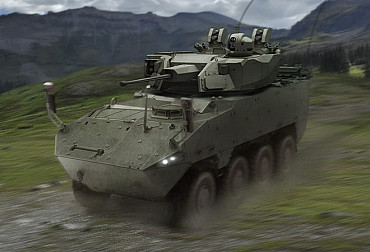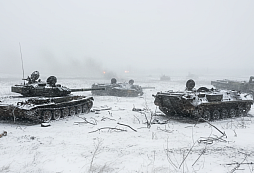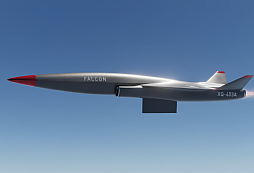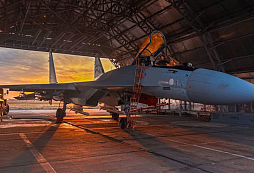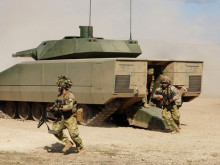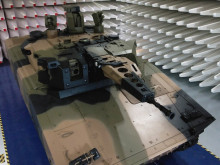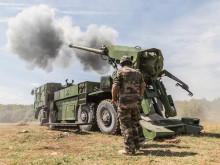In addition to the DITA project, a prototype of a self-propelled howitzer with a barrel length of 52 calibres is being built in the Czech Republic
After a period of decline, which began in the late 1980s in connection with the decline of markets and the desperate economic situation of socialist Czechoslovakia and continued until the turn of the millennium, the Czech defence industry is developing and is already among the world leaders in many areas. This is reflected, among other things, in the courage and ambition to come up with its own solutions even in the case of very demanding and sophisticated systems such as self-propelled artillery.
Taking into account some hesitations of the Army and the Ministry of Defence in the matter of modernisation of the Czech Armed Forces' armament in this respect and changes in the approach, when only relatively recently it was finally decided to switch to the 155 mm NATO calibre, promising, but unused by the Czech Armed Forces, modernised versions of the DANA M1, M1M and M2 self-propelled gun howitzers were created, still using the original 152 mm calibre. In June 2020, the Army then selected the 155mm Caesar self-propelled howitzer from the French company Nexter as a replacement for the existing 152mm SPH M. 77 DANA. Subsequently, the Government of the Czech Republic supported this purchase on 13 September 2021. The Czech Army will receive a total of 52 Caesar guns, built on Czech Tatra chassis.
Almost simultaneously with the acquisition of the Caesar, Excalibur Army presented the project of the DITA self-propelled howitzer of 155 mm calibre with a barrel length of 45 calibres. However, the Excalibur Army website also contains information on the development of a prototype self-propelled howitzer with a barrel length of 52 calibres.
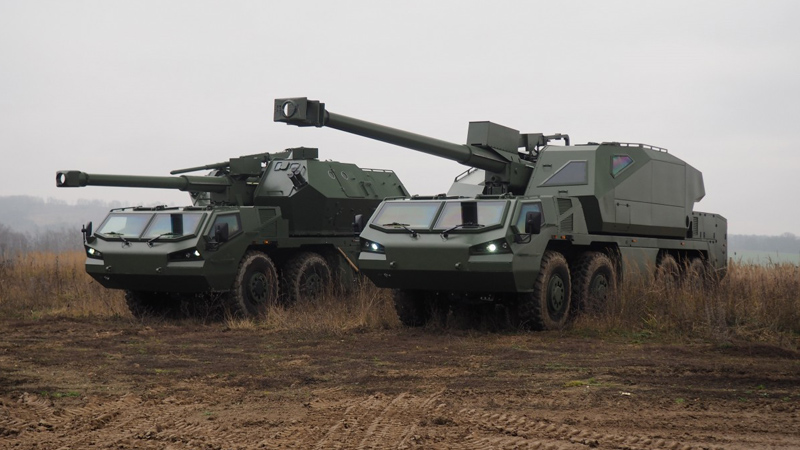 Picture: DITA 155 mm self-propelled howitzer | Excalibur Army
Picture: DITA 155 mm self-propelled howitzer | Excalibur Army
Modern artillery systems are offered by the Western market in quite a number of types. As regards tracked self-propelled vehicles, i.e. the most robust vehicles with high penetration through difficult terrain, which on the other hand is compensated by higher acquisition and operating costs and lower strategic mobility, there are mainly the German Panzerhaubitze 2000, developed by Krauss-Maffei Wegmann and Rheinmetall (most recently by Hungary; they are also in service in the Netherlands, Croatia, Greece, Italy and Lithuania), the French AMX-30 AuF1, which are being replaced in service by wheeled Caesars, the American M109, which are used in various versions by Denmark, Greece, Norway, Spain, Austria or Latvia, and in addition to the USA also in significant numbers by Israel, the British AS-90, or interestingly, the recently introduced Polish AHS Krab, which combines the chassis of the South Korean K9 howitzer with the British AS-90M turret.
In the context of the Czech acquisition of the Caesar system, the advantages and disadvantages of various solutions of wheeled self-propelled artillery vehicles were widely discussed, especially with regard to the location of the main weapon in the rotating turret and the lighter (and cheaper) solution in the form of a mounted weapon, which, in addition to the Caesar, is used by the Swedish Archer system (BAE Systems), the Israeli ATMOS 2000 (Soltam Systems), the Polish AHS Kryl (Huta Stalowa Wola), or the new Ukrainian type 2S22 Bohdana.
The Czech domestic solutions are clearly going the way of placing the barrel in a rotating armoured turret, which is an element that has long been a Czech or Czechoslovak (and Czechoslovak-Polish) speciality of the unique and proven, but nowadays already out-of-range DANA system and its derivatives or follow-on versions. The same concept is also used by the Slovak 155 mm ZUZANA system, built on the Tatra chassis and based on the DANA.
While both ZUZANA and the new DITA project have a 155 mm main gun of 45 calibres, a project is also under construction in the Czech Republic, which is to result in a prototype of a self-propelled howitzer with a 52 calibres main gun, which is standard in modern deployed types (PzH 2000, Caesar, Archer, ATMOS). The concept with a rotating turret, although at first glance not nearly as elegant as the Czech solutions, is also being implemented by the German company Rheinmetall in a similar way to its new HX3 on a Man 10x10 chassis - it is equipped with a 155 mm barrel of 60 calibres (tests of the prototype are planned for the turn of 2022 and 2023).
Excalibur Army has received support from the European Regional Development Fund, Operational Programme Enterprise and Innovation for Competitiveness for the project "Research and development of a prototype 155 mm calibre self-propelled howitzer". On the company's website we can read the following: "The aim of the project will be the research and development of a demonstration functional prototype of a self-propelled howitzer of 155 mm calibre with a barrel length of 52 calibre, which will be integrated on a special wheeled chassis with very high stability for driving and firing. The howitzer body itself will be designed as a separate unit, which can be universally integrated on different types of wheeled and tracked vehicle chassis according to the customer's requirements (...) Excalibur Army will develop several new subsystems of the howitzer in the submitted project."
The longer barrel allows for more efficient use of the propellant charge and increases the projectile's muzzle velocity, which translates, among other things, into a longer range (on the order of several kilometres). And longer range means covering a larger area with fire, even without the use of advanced rocket-propelled and guided grenade technologies, and is naturally an advantage in relation to the destruction of enemy artillery positions during counter-battery fire.
The question is whether the result will be an evolution of the DITA project and the fitting of a more powerful weapon to its turret, or whether it will be a new design in its own right, expanding the portfolio of self-propelled artillery assets with an entirely new type. One of the great advantages of the DITA system is that its turret is fully autonomous. Not only can it operate when the chassis is completely out of service, but it can also be easily mounted on another suitable chassis, including a tracked chassis. In this respect, the brief for the new project talks explicitly about a special wheeled chassis, but it can be assumed that for a number of reasons the project will follow a similar path and that the eventual placement of the turret on a tracked chassis will not be a difficult problem. Given the fact that tracked platforms are by no means abandoned in the Allied armies, this would be a logical step.
If, as a result of changes in the concept of artillery armament development in the past, the Czech industry has staggered slightly, it is now making up for the loss with powerful steps. The existing technological demonstrator of the DITA self-propelled gun howitzer and its further development, and the newly launched project of the long-barrelled self-propelled howitzer, go hand in hand with the capability of domestic production of modern artillery ammunition (propellants by Explosia, EFRB grenades by STV Group) promise that the Czech Republic will become self-sufficient and competitive in the field of self-propelled artillery in the future - which will have a positive impact in the future when it will be necessary to start dealing with replacements for the currently procured Caesars.
















